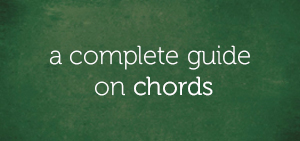In this lesson, I’ll be showing you why music scholars think you should know the Cb and E# notes.
C#:
…is known by almost everyone (even those who started learning yesterday). Same thing can be said about Eb:
But the moment you talk about Cb and E#, it raises eyebrows and this is because there are certain note spellings that so many musicians don’t know on the keyboard and this is because of the general perception of sharps (#) and flats (b).
Contrary to the understanding of sharps and flats, we’ll be looking at the proper definition of sharps and flats from a theoretical standpoint and after that, you’ll understand see the Cb and E# notes and understand their importance as well.
“What Are Sharps And Flats?”
Sharps and flats are symbols used in the modification of pitch. The pitch of a note is said to be modified when it is either raised or lowered.
Let’s look at these symbols closely.
A Short Note On The Sharp Symbol
The sharp symbol (#) raises the pitch level of a note by a half-step.
For example, the note C:
…can be modified by the sharp symbol (#), which raises its pitch level by a half-step. Raising C by a half-step produces C#:
The addition of the sharp symbol to the letter name of any given note, raises its pitch by a half-step.
Raising F (by a half-step):
…produces F#:
Raising G (by a half-step):
…produces G#:
Raising A (by a half-step):
…produces A#:
…and so on.
Attention: To take your knowledge of music theory to another level, I recommend that you get our 500+ page course: The “Official Guide To Piano Playing.” Click here to let us know.
The Flat Symbol — Explained
The flat symbol (b) lowers the pitch level of a note by a half-step. For example, the note D:
…can be modified by the flat symbol (b), which lowers its pitch level by a half-step. Lowering D by a half-step produces Db:
The addition of the flat symbol to the letter name of any given note, lowers its pitch by a half-step.
Lowering G (by a half-step):
…produces Gb:
Lowering A (by a half-step):
…produces Ab:
Lowering B (by a half-step):
…produces Bb:
…and so on.
Attention: To take your knowledge of music theory to another level, I recommend that you get our 500+ page course: The “Official Guide To Piano Playing.” Click here to let us know.
“So, Where Are The Cb and E# Notes On The Piano?”
From our understanding of sharp and flat symbols as pitch modifiers, it’s clear that Cb and E# notes are modified from the natural C and E notes.
Cb is basically a C note:
…that is lowered by a half-step. Lowering C by a half-step produces Cb:
…while the E# note is an E note:
…that is raised by a half-step. Raising E by a half-step produces E#:
So, here is the Cb note:
…and the E# note:
Why Scholars Think You Should Know The Cb and E# Notes
The Cb note (which is rare):
…is always considered as B (which is common):
The same thing applies to the E# note:
…which is always misspelled as F:
If you’re in the league of musicians who consider Cb as B and E# as F, then you need to pay attention to two reasons why music scholars think you should know the Cb and E# notes.
Reason #1 – Cb Is The Fourth Tone Of The Gb Major Scale
In the key of Gb major:
Cb:
…is the fourth tone.
Although the Cb note is misspelled as B:
…most of the time and this is because B is the more common spelling of the fourth tone of the Gb major scale, it is important to note that the fourth tone of the Gb major scale is NOT B:
…it is Cb:
Reason #2 – E# Is The Third Tone Of The C# Major Scale
In the key of C# major:
E#:
…is the third tone.
The E# note is usually misspelled as F:
…most of the time and this is because F is the more common spelling of the fourth tone of the C# major scale. However, it is important to note that the third tone of the C# major scale is NOT F:
…it is E#:
Final Words
The use of the Cb and E# spelling is inevitable in music theory; as long as the keys of Gb major:
…and C# major:
…are in perspective.
It’s also important to note that the seventh tone of the F# major scale:
…is E#:
So, the next time you come across Cb and E#, I’m very certain they won’t raise those eyebrows anymore.
Keep up the great work.
Chuku Onyemachi
Latest posts by Chuku Onyemachi (see all)
- The Formation Of Diminished Seventh Chords Used To Be Challenging Until I Did This
- How To Form Seventh Chords In Two Shakes Of A Dog’s Tail Using Third Intervals And The Circle Of Fifths Chart
- I Played The 13sus4 Chord And This Happened…
- How To Build Seventh Chords Like An Architect Using “Foundation And Structure” Concept
- This 4-Week Plan Will Help You Master All The Major Scales







Comments on this entry are closed.